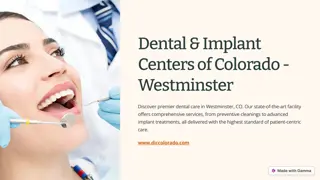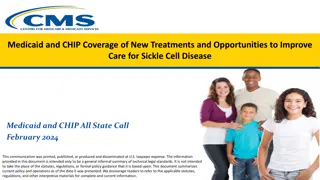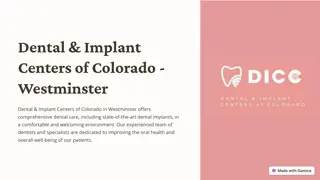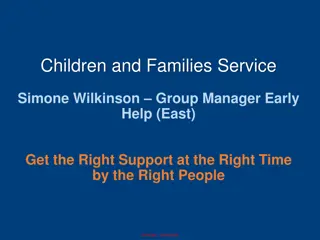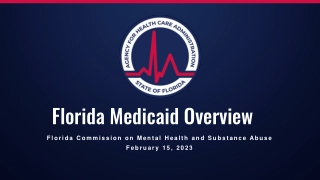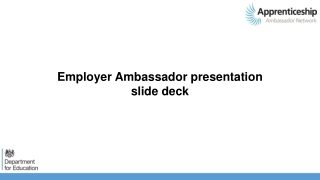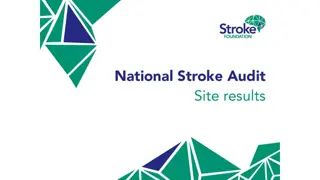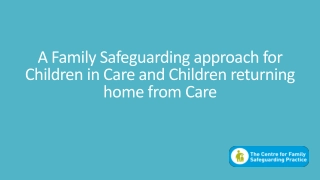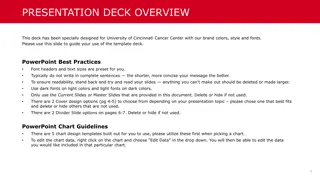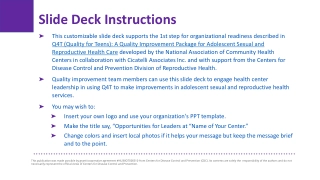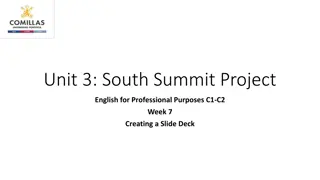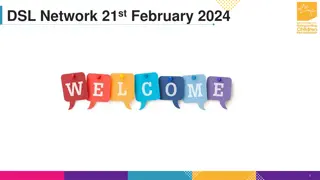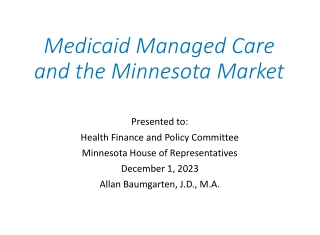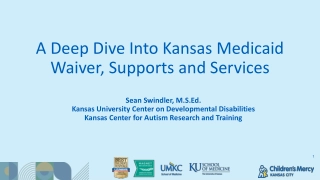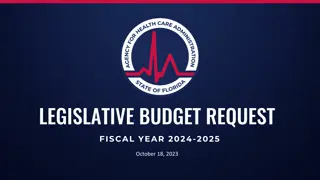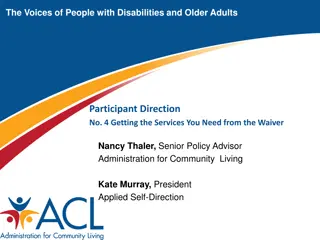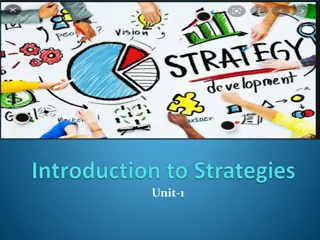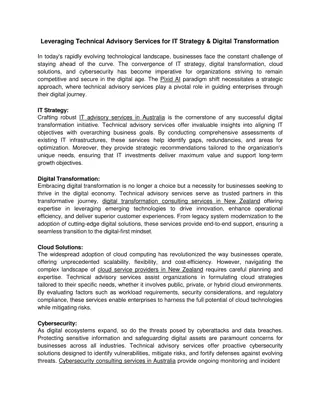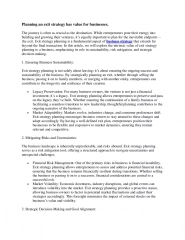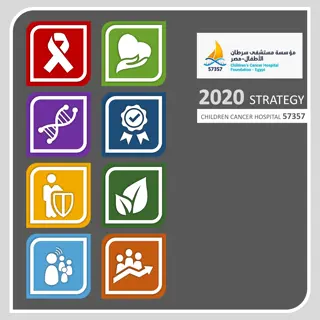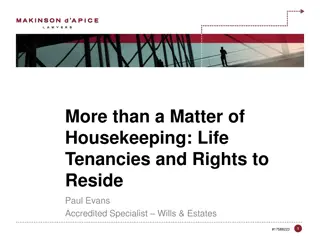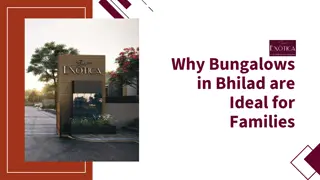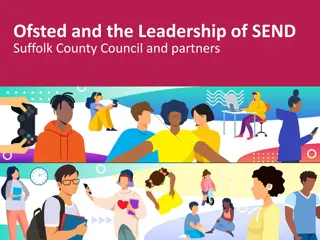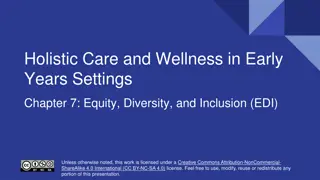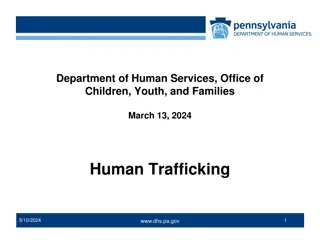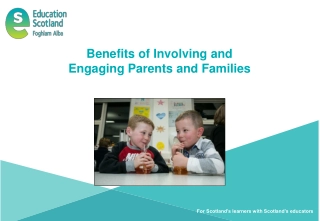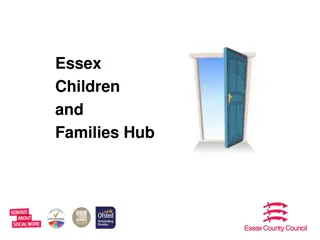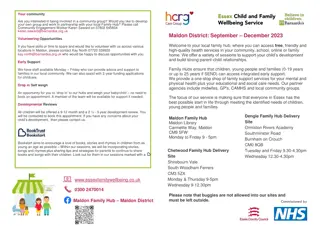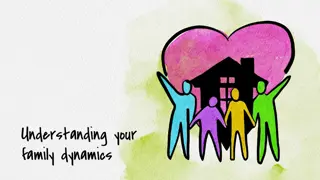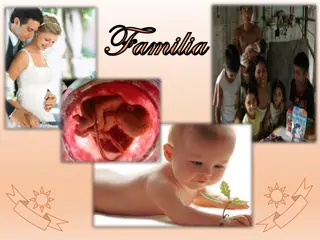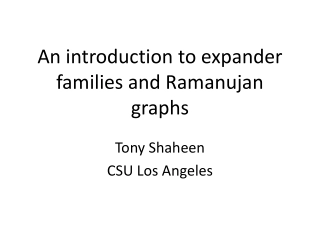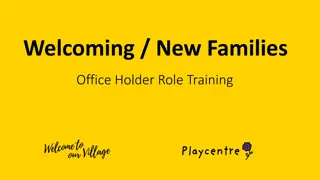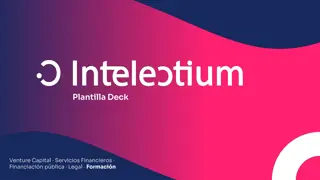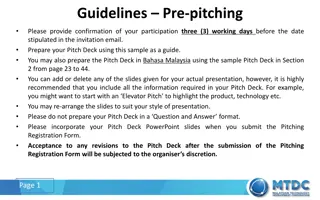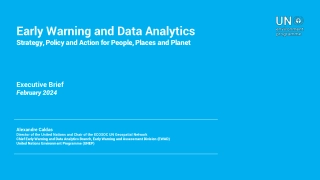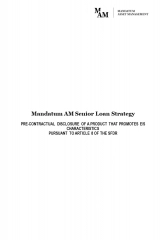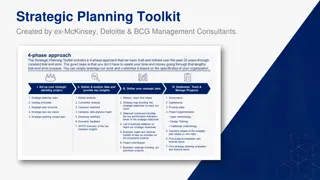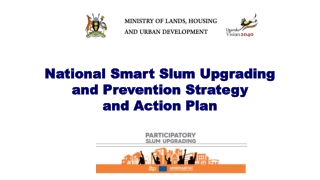Medicaid Unwinding: All-Hands-On-Deck Strategy for Children and Families
This confidential document outlines a strategy for Medicaid outreach to children and families, emphasizing the importance of maintaining coverage, engaging community partners, and addressing the potential impact of enrollment changes. Initiatives include spreading awareness, collaborating with agencies, and supporting families through the renewal process to prevent coverage loss.
Medicaid Unwinding: All-Hands-On-Deck Strategy for Children and Families
PowerPoint presentation about 'Medicaid Unwinding: All-Hands-On-Deck Strategy for Children and Families'. This presentation describes the topic on This confidential document outlines a strategy for Medicaid outreach to children and families, emphasizing the importance of maintaining coverage, engaging community partners, and addressing the potential impact of enrollment changes. Initiatives include spreading awareness, collaborating with agencies, and supporting families through the renewal process to prevent coverage loss.. Download this presentation absolutely free.
Presentation Transcript
Medicaid Unwinding: An All-Hands-On- Deck Strategy to Support Outreach to Children and Families August 2023 INFORMATION NOT RELEASABLE TO THE PUBLIC UNLESS AUTHORIZED BY LAW: This information has not been publicly disclosed and may be privileged and confidential. It is for internal government use only and must not be disseminated, distributed, or copied to persons not authorized to receive the information. Unauthorized disclosure may result in prosecution to the full extent of the law.
Medicaid Unwinding: An All-Hands-On-Deck Approack ALL HANDS ON DECK! We are calling to action every federal/state agency that works with children and families to engage directly and through partners to help them maintain coverage SPREAD THE WORD: Getting the word out about Medicaid renewals is an all-hands-on-deck effort. States, local elected officials, health plans, providers, and others in the public and private sectors must work to get the message out to Medicaid and CHIP enrollees across the country ENGAGE COMMUNITY PARTNERS to support all families whether or not they regularly interact with state agencies by partnering with State Medicaid/CHIP agency, which can provide direct assistance to families with completing the renewal form. INFORMATION NOT RELEASABLE TO THE PUBLIC UNLESS AUTHORIZED BY LAW: This information has not been publicly disclosed and may be privileged and confidential. It is for internal government use only and must not be disseminated, distributed, or copied to persons not authorized to receive the information. Unauthorized disclosure may result in prosecution to the full extent of the law. 2
Medicaid & CHIP Today: Enrollment Is at an All-Time High In March 2020, the Families First Coronavirus Response Act (FFCRA) established the continuous enrollment condition, which gave states extra federal Medicaid funding in exchange for maintaining enrollment for most individuals. As a result of this legislation and flexibilities adopted by states, Medicaid and Children s Health Insurance Program (CHIP) enrollment has grown to a record high of over 93M individuals as of February 2023. This represents an increase of over 22 million individuals, or 32 percent, since February 2020. According to some estimates, when states resume renewals, over 15 million people will leave Medicaid and CHIP, including 5.3 million children some because they are no longer eligible and some for procedural reasons. We are particularly concerned that eligible children will lose coverage simply because their parents don t know to complete the renewal process. Resource: february-2023-medicaid-chip-enrollment-trend-snapshot INFORMATION NOT RELEASABLE TO THE PUBLIC UNLESS AUTHORIZED BY LAW: This information has not been publicly disclosed and may be privileged and confidential. It is for internal government use only and must not be disseminated, distributed, or copied to persons not authorized to receive the information. Unauthorized disclosure may result in prosecution to the full extent of the law. 3
Children in Medicaid/CHIP Children are covered by two distinct programs, Medicaid and the Children s Health Insurance Program (CHIP) Created in 1997, CHIP covers about 7M children under 19 in all states whose family income is too high to be eligible for Medicaid and represents an option different than the Marketplace or employer-sponsored coverage for low-income children. Like Medicaid, CHIP income eligibility varies by state. Most states have combined Medicaid and CHIP programs. The upper income limit for separate CHIP programs ranges from 185 to 400 percent of the federal poverty level. As of April 2023, 42M children in the country are covered by Medicaid (~35M) and CHIP (~7M). This represents ~51% of the children in the country, and almost half of all Medicaid beneficiaries More than forty percent of births in the US (more than 50% in some states) are covered by Medicaid/CHIP Medicaid children include children who are income-eligibleas well as children who are disabled, in foster care, in the juvenile justice system, and other highly vulnerable groups Medicaid enrollment increased by about 34%, while CHIP enrollment increased about 5%. CHIP was not subject to the same continuous enrollment requirements as Medicaid, and many states have continued to determine eligibility for CHIP throughout the pandemic. Children and Youth with Special Health Needs (CYSHN) and the subset of CYSHN with medical complexity (CMC) make up about 20% and 1- 3%, respectively, of all children enrolled in Medicaid, and often depend on Medicaid and CHIP daily for life-sustaining treatment including medication, durable medical equipment, home care, and medical care. A subset of children with disabilities who would otherwise be institutionalized are eligible for Medicaid through either Home and Community Based Services (HCBS) waivers or Katie Beckett waivers. Most children in Title IV-E foster care are eligible for Medicaid, and youth who aged out of foster care and transition to independence (between age 18 and 21) are eligible for Medicaid until they are 26. INFORMATION NOT RELEASABLE TO THE PUBLIC UNLESS AUTHORIZED BY LAW: This information has not been publicly disclosed and may be privileged and confidential. It is for internal government use only and must not be disseminated, distributed, or copied to persons not authorized to receive the information. Unauthorized disclosure may result in prosecution to the full extent of the law. 4
Overview: Medicaid/CHIP income eligibility continuum Given the higher income eligibility for children, children may retain eligibility for Medicaid or CHIP even if their parent/caregiver is over income. INFORMATION NOT RELEASABLE TO THE PUBLIC UNLESS AUTHORIZED BY LAW: This information has not been publicly disclosed and may be privileged and confidential. It is for internal government use only and must not be disseminated, distributed, or copied to persons not authorized to receive the information. Unauthorized disclosure may result in prosecution to the full extent of the law. 5
What is special for kids in Medicaid/CHIP? Early and Periodic Screening, Diagnostic, and Treatment (EPSDT) Benefit Under federal law, Medicaid-enrolled children under age 21 are entitled to comprehensive and preventive health care services, including appropriate preventive, dental, mental health, developmental, and specialty services. 14 States have taken the option to cover EPSDT for some or all separate CHIP beneficiaries. Express Lane Eligibility (ELE) The CHIP Reauthorization Act of 2009 (CHIPRA) created the ELE option, which permits states to rely on findings from another program designated as an express lane agency (ELA) to determine whether a child satisfies one or more factors of eligibility. Allowing this automatic enrollment into coverage can increase state ex parte determination rates. ELAs may include: SNAP, WIC, TANF, National School Lunch Program, and Head Start, among others. State income tax data may be used to identify children in families that might qualify and so that families do not have to submit income information. Only 7 states currently take advantage of ELE In 2016, an OIG report found that all states that implemented ELE experienced reduced administrative burden and costs. School Health Services-Medicaid and CHIP funding supports essential health and mental health services in schools (Resource: Delivering Services in School-Based Settings: A Comprehensive Guide to Medicaid Services and Administrative Claiming) Continuous eligibility Previously a state plan option, as of 1/1/2024 States will be requiredto maintain children s enrollment in Medicaid and CHIP for 12-months once they are found to be eligible INFORMATION NOT RELEASABLE TO THE PUBLIC UNLESS AUTHORIZED BY LAW: This information has not been publicly disclosed and may be privileged and confidential. It is for internal government use only and must not be disseminated, distributed, or copied to persons not authorized to receive the information. Unauthorized disclosure may result in prosecution to the full extent of the law. 6
Medicaid Unwinding: Strategies for children TARGET PARTICULARLY VULNERABLE GROUPS OF CHILDREN/FAMILIES: Parents of enrolled children ages 3 and under (born since March 2020) may have never had to complete a Medicaid renewal for their child (or themselves, if this is their first child) Immigrant families may need extra support through community brokers, interpreters and/or translation services; children in immigrant or mixed-status families and whose families may not speak or read English are at particular risk of losing coverage. States are not required to reverify immigration status at renewal, unless the beneficiary has an immigration status that is subject to change or a change is reported. Although some children with disabilities may receive supplemental social security income (SSI) and be categorically eligible for Medicaid, many are not and thus will not be categorically ex parte renewed, potentially leaving a large number of CYSHN and CMC vulnerable to losing coverage. INFORMATION NOT RELEASABLE TO THE PUBLIC UNLESS AUTHORIZED BY LAW: This information has not been publicly disclosed and may be privileged and confidential. It is for internal government use only and must not be disseminated, distributed, or copied to persons not authorized to receive the information. Unauthorized disclosure may result in prosecution to the full extent of the law. 7
Strategies for Unwinding: Community partners Every youth or family depends on trusted messengers to help answer their questions let s make sure that the messengers have the answers about Medicaid and CHIP Families need hands-on help getting through the last mile to complete and submit their renewals; states should make sure that there are last mile helpers in the community, in schools, and at providers offices Youth depend on peers for answers use trained peers whenever possible in settings frequented by adolescents and young adults Community Partners are essential to incorporate into the unwinding in every state; national chapters can be enlisted to push the message out to their local affiliates, including Boys and Girls Clubs; YMCAs; summer camps; community centers; faith- based organizations; youth sports events, esp. tournaments; barbershops, nail salons, other beauty salons; public libraries. National organizations should direct local affiliates to Medicaid.gov as well as to state Medicaid websites to ensure that organizations are using the most updated and consistent materials Organizations can provide direct support to families, including partnering with the State Medicaid Agency to host Medicaid/CHIP assisters at high-attendance events Connecting Kids to Coverage (CKC) grantees are experts in enrolling and retaining kids in Medicaid and CHIP. Consider collaborating with them or a CKC outreach partner if there is one in your state. It s OK, and even preferable, for families to hear the message from more than one provider or organization; messaging should be aligned so they understand that everyone is talking about the same redetermination INFORMATION NOT RELEASABLE TO THE PUBLIC UNLESS AUTHORIZED BY LAW: This information has not been publicly disclosed and may be privileged and confidential. It is for internal government use only and must not be disseminated, distributed, or copied to persons not authorized to receive the information. Unauthorized disclosure may result in prosecution to the full extent of the law. 8
Key approaches for special populations (1 of 3) Families with children three and under have never had to complete a redetermination for their child; throughout their child s life, they have been told to ignore the paperwork and they can still maintain their coverage These families need extra support, but they also tend to have contact with providers more often than families of older children; their child s primary care provider is a trusted source of information Every pediatrician and family medicine MD needs to know that the unwinding has started; AAP/GCCF state-specific toolkit includes patient-facing flyers for primary care offices WIC, Head Start, Home Visitors, Early Intervention providers, Child Care providers, and others can support young families INFORMATION NOT RELEASABLE TO THE PUBLIC UNLESS AUTHORIZED BY LAW: This information has not been publicly disclosed and may be privileged and confidential. It is for internal government use only and must not be disseminated, distributed, or copied to persons not authorized to receive the information. Unauthorized disclosure may result in prosecution to the full extent of the law. 9
Key approaches for special populations (2 of 3) Families with children with special health needs (CYSHN) often depend on Medicaid and CHIP daily for life-sustaining treatment including medication, durable medical equipment, home care, and medical care. States should consider ways to streamline both MAGI and non-MAGI redeterminations for these kids Parents benefit from peer support; Family 2 Family and other family support organizations should be enlisted to help with redeterminations INFORMATION NOT RELEASABLE TO THE PUBLIC UNLESS AUTHORIZED BY LAW: This information has not been publicly disclosed and may be privileged and confidential. It is for internal government use only and must not be disseminated, distributed, or copied to persons not authorized to receive the information. Unauthorized disclosure may result in prosecution to the full extent of the law. 10
Key approaches for special populations (3 of 3) Transition age youth (TAY) ages 19+ are at particular risk of losing coverage if they aged out of children's Medicaid or CHIP or attained an age that could affect their Medicaid eligibility This should be considered a change in circumstances for which states need to reevaluate the child's Medicaid eligibility States should consider providing a warm handoff or doing outreach to young adults who may be no longer be part of the same Medicaid household State Medicaid Agencies should partner with other HHS TAY-serving agencies and community partners to reach TAY and support them to maintain coverage INFORMATION NOT RELEASABLE TO THE PUBLIC UNLESS AUTHORIZED BY LAW: This information has not been publicly disclosed and may be privileged and confidential. It is for internal government use only and must not be disseminated, distributed, or copied to persons not authorized to receive the information. Unauthorized disclosure may result in prosecution to the full extent of the law. 11
Key messages for children, youth, and families Key messages for families (all should be created with possibility to customize; families don t necessarily recognize the words Medicaid, CHIP, or coverage): Your kids may be eligible even if you re not; if you get a renewal form in the mail, make sure to complete it Make sure your address is up to date and check your mail Fill out your and your child s renewal form Help is available! You can contact your state Medicaid agency by phone, on-line, or by walking into an enrollment center Your child s doctor s office, clinic, care manager, or a case manager from another state agency may be able to help you complete your application Keep your kids healthy, keep your Medicaid/CHIP Schools and Medicaid/CHIP are partnering to keep kids healthy Healthy students are ready to learn! If you get a Medicaid/CHIP renewal form, make sure to complete it! 1 in 2 kids/young adults has Medicaid/CHIP. Do you? Renew! INFORMATION NOT RELEASABLE TO THE PUBLIC UNLESS AUTHORIZED BY LAW: This information has not been publicly disclosed and may be privileged and confidential. It is for internal government use only and must not be disseminated, distributed, or copied to persons not authorized to receive the information. Unauthorized disclosure may result in prosecution to the full extent of the law. 12
Find more information on the website Stakeholders can find detailed policy, state contact information, and communications materials on Medicaid.gov/unwinding INFORMATION NOT RELEASABLE TO THE PUBLIC UNLESS AUTHORIZED BY LAW: This information has not been publicly disclosed and may be privileged and confidential. It is for internal government use only and must not be disseminated, distributed, or copied to persons not authorized to receive the information. Unauthorized disclosure may result in prosecution to the full extent of the law. 13
Examples of materials for children/youth INFORMATION NOT RELEASABLE TO THE PUBLIC UNLESS AUTHORIZED BY LAW: This information has not been publicly disclosed and may be privileged and confidential. It is for internal government use only and must not be disseminated, distributed, or copied to persons not authorized to receive the information. Unauthorized disclosure may result in prosecution to the full extent of the law. 14
Resources Supporting Seamless Coverage Transitions for Children Moving Between Medicaid and CHIP in Separate CHIP States (December 2022) Medicaid and CHIP Eligibility Renewals: A Communications Toolkit Connecting Kids to Coverage Back-to-School & School-Based Outreach Materials Delivering Services in School Based Settings: A Comprehensive Guide to Medicaid Services and Administrative Claiming Medicaid and CHIP Renewals Outreach and Educational Resources State Strategies to Prevent Procedural Terminations (June 2023) INFORMATION NOT RELEASABLE TO THE PUBLIC UNLESS AUTHORIZED BY LAW: This information has not been publicly disclosed and may be privileged and confidential. It is for internal government use only and must not be disseminated, distributed, or copied to persons not authorized to receive the information. Unauthorized disclosure may result in prosecution to the full extent of the law. 15


